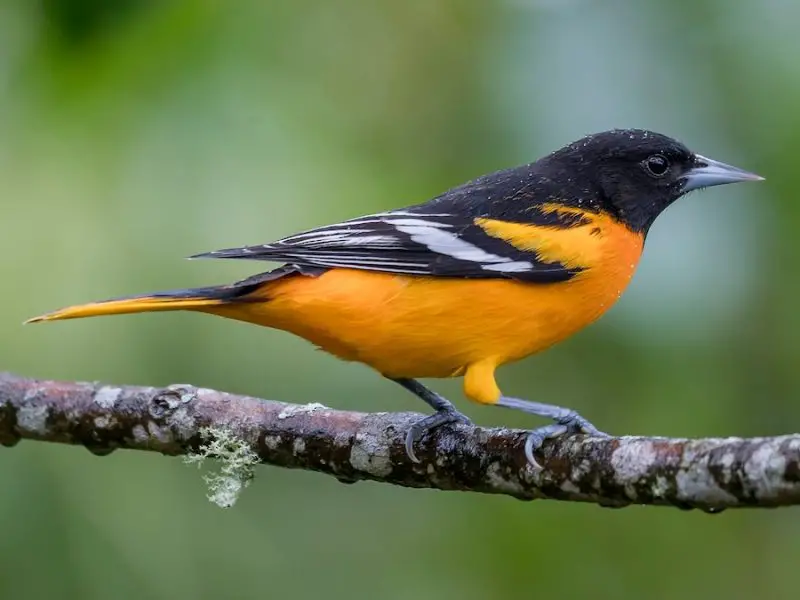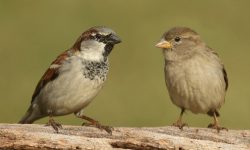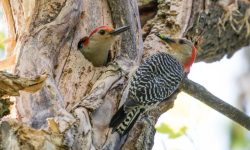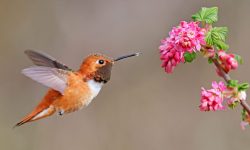The Baltimore Oriole (Icterus galbula) is not only admired for its vibrant orange plumage and melodic song but also for its unique dietary habits. These striking birds exhibit a varied and seasonal approach to feeding, shaped by migration, breeding behavior, and available food sources. Understanding what Baltimore Orioles eat is key to appreciating their role in ecosystems—and attracting them to your backyard.
From sweet fruits and nectar to protein-rich insects, the oriole’s menu is more diverse than many people realize. In this guide, we’ll explore the full range of foods Baltimore Orioles consume, how their diet changes throughout the year, and the clever ways they forage for sustenance across North America.

Natural Diet of the Baltimore Oriole
Seasonal Adaptability
The Baltimore Oriole is a master of seasonal transition, and nowhere is this more apparent than in its ever-shifting diet. As the calendar turns and landscapes change, so too does the oriole’s menu—reflecting not just what’s available in its environment, but what its body and family demand to survive.
In the vibrant days of spring and early summer, as these brilliant birds return to their breeding grounds across eastern and central North America, their dietary focus sharpens. Now is the time for protein. Nesting season requires fuel not just for long flights and territory defense, but for the intense labor of raising young. Adult orioles zero in on insects—soft-bodied caterpillars, beetles, and spiders—which offer the high protein content necessary for chick growth and adult stamina. Every morsel plucked from leaves or bark is critical to their reproductive success.
But as summer fades to autumn and the urge to migrate southward builds, the oriole undergoes a profound transformation in both physiology and foraging behavior. Their protein cravings wane, replaced by a powerful hunger for sugars and fruit juices. They begin seeking out ripe berries, wild cherries, and juicy oranges—high-energy sources that provide the caloric reserves needed for migration, a journey that spans thousands of miles. In just a few weeks, their feeding becomes more frenzied, more urgent, as they prepare to traverse an entire continent.
This remarkable adaptability—shifting seamlessly from insect hunter to fruit lover—allows the Baltimore Oriole to thrive across an extraordinary range of ecosystems. From the maple-lined suburbs of Ontario and the open woodlands of the Midwest to the lush, tropical forests of Central America and northern South America, this bird knows how to read its environment and respond with precision.
In every season and habitat, its dietary rhythm is a reflection of nature’s own cycles—resilient, responsive, and deeply attuned to the balance between energy, survival, and migration.
Insect and Arthropod Consumption
Protein for Breeding and Growth
During the height of the breeding season, Baltimore Orioles become expert insect hunters. Their vibrant appearance may steal the spotlight, but it’s their relentless search for protein-rich prey that defines this vital period. Insects and other invertebrates provide the essential fuel for survival and reproduction, giving adults the energy to defend territories, build nests, and raise their young.
The diet at this stage is dominated by caterpillars, particularly tent caterpillars, whose soft bodies and high protein content make them ideal for feeding hungry chicks. Orioles also seek out beetles, moths, crickets, grasshoppers, ants, and spiders, plucking them from leaves, branches, and the undersides of twigs with impressive agility. No part of the forest canopy is off-limits; they even hover briefly like hummingbirds to snatch a spider from its web or an insect mid-flight.
These acrobatic foraging techniques make the oriole an efficient predator, especially in wooded habitats where insect life thrives during spring and early summer. Every movement is purposeful, every strike calculated. Males and females alike spend much of the day scanning bark, fluttering through the lower canopy, and responding instinctively to the flick of a leaf or the glint of an insect wing.
For the growing nestlings, this constant flow of prey is the difference between survival and starvation. Parents make repeated trips to the nest with mouthfuls of squirming larvae, feeding each chick with astonishing precision. It’s a scene repeated thousands of times during a breeding season, powered entirely by the oriole’s ability to harvest the hidden protein woven into every forest edge.
Fruit and Sugar Sources
Sweet-Toothed Songbirds
Although insects form the cornerstone of the Baltimore Oriole’s springtime diet, these birds are equally renowned for their passion for fruit. Their brilliant orange plumage seems to echo their taste for vivid, sun-ripened sweetness. Once the breeding season begins to wind down, orioles shift their focus from protein to sugar, diving eagerly into the bounty of wild berries and orchard fruits that flourish in late summer.
In their natural habitats, Baltimore Orioles feast on wild cherries, blackberries, raspberries, mulberries, elderberries, figs, and clusters of wild grapes hanging from vine-laced trees. Their feeding is deliberate and precise. Using their slender, slightly curved bills, they pierce the skin of a ripe fruit and lap up the juice inside, often leaving a hollowed shell clinging to the branch. They don’t typically consume the fruit whole—instead, they sip the rich sugars as if drinking directly from nature’s own nectar cups.
These birds show a clear preference for soft, accessible fruits, particularly those growing in open or semi-open areas like woodland edges, thickets, and backyards with fruiting shrubs. As they move through the canopy, they forage slowly and attentively, pausing often to inspect each branch for a burst of color that signals a ripe reward.
By late summer and early fall, as the pull of migration begins to stir, fruit becomes the dominant part of their diet. High in natural sugars and moisture, these fruits deliver the energy needed to power a journey that stretches from the Great Lakes or New England all the way to the tropical forests of Central and South America. In this stage, every calorie counts. Their bodies are building fat reserves for migration, and fruit offers the ideal blend of fuel and hydration.
Backyard birdwatchers often notice orioles returning to the same fruiting tree again and again, defending it with quiet confidence. It’s more than just a snack—it’s part of the survival strategy of a species that knows how to match its cravings to the cycles of the earth.
Nectar Feeding and Flower Foraging
Natural and Artificial Sugar Sources
While Baltimore Orioles are well known for their love of fruit, their affinity for nectar is equally remarkable. Like hummingbirds, they are drawn to the sweet rewards tucked within the trumpet-shaped blossoms of flowering vines and wild herbs. In spring and summer, when native flowers bloom across woodlands and gardens, orioles can be seen hovering briefly or perching near blooms of trumpet vine, coral honeysuckle, jewelweed, and bottlebrush.
Their feeding technique is delicate and specialized. Using a brush-tipped tongue, they dip deep into the flower’s throat, lapping up nectar with rhythmic flicks. The act is not just nourishing—it’s ecological. As they feed, the birds often brush against the flower’s reproductive parts, unintentionally transferring pollen from one blossom to another. In this way, the oriole becomes an accidental pollinator, quietly playing a role in the reproductive cycle of the plants it visits.
This natural behavior extends easily to backyard settings, where orioles quickly learn to associate human-provided nectar sources with an easy meal. Bird enthusiasts often attract them with specialized oriole feeders, which differ from hummingbird feeders in both design and function. Orioles prefer feeders with larger, open ports and sturdy perches that allow them to rest while they sip. These feeders are usually filled with a simple sugar-water solution—four parts water to one part white sugar, with no dye or additives required.
Adding a splash of bright orange, such as hanging sliced oranges nearby or using orange-colored feeders, can dramatically improve your chances of attracting these birds in early spring. The color mimics the hue of ripe fruit, which orioles are evolutionarily attuned to recognize.
Whether flitting among wild honeysuckle or visiting a well-placed backyard feeder, Baltimore Orioles reveal a gentle, almost whimsical side to their feeding behavior. Their love of nectar connects them not just to flowers, but to the larger web of pollination, migration, and seasonal change.
Foraging Behavior and Techniques
Agile and Curious Feeders
Baltimore Orioles are agile navigators of the treetops, rarely seen feeding on the ground. Their lives unfold high in the canopy, where they move with a deliberate, rhythmic grace—hopping from branch to branch, occasionally gliding short distances, always alert to the flicker of a leaf or the shimmer of ripe fruit. This arboreal lifestyle shapes every aspect of how they forage, blending precision, curiosity, and a touch of improvisation.
As insect hunters, they excel at gleaning, a technique that involves picking prey from the surface of leaves, bark, or twigs. Their sharp eyes can detect the slightest movement of a caterpillar or beetle larva, which they snatch in quick, darting motions. Their reach extends beyond static targets as well—these orioles sometimes pursue insects in flight, launching from a branch to snatch prey mid-air, returning quickly to perch.
But insects are only part of their story. When flowers are in bloom, orioles delicately probe for nectar, occasionally sharing the same blossoms with hummingbirds. Their strong, curved bills make them adept at piercing fruit skins to access the sugary juice inside—a behavior that leaves behind partially hollowed fruits hanging like open vessels.
What sets the Baltimore Oriole apart is its intelligent, exploratory approach to feeding. These birds learn quickly, often remembering the location of productive trees or feeders and returning to them throughout the day. In environments where food sources overlap, such as a flowering tree crawling with insects, orioles maximize their effort by feeding on both nectar and protein-rich prey from the same site.
Even during migration, when their surroundings may be unfamiliar, their instinct for discovery rarely fails. Keen eyesight, combined with natural curiosity, allows them to find fruiting shrubs, insect-rich canopies, or hidden flower patches even in new landscapes.
This combination of agility, adaptability, and observation makes the Baltimore Oriole not just a beautiful bird, but a remarkably efficient forager—one whose feeding behavior mirrors its broader journey through a world shaped by season, structure, and survival.
Baltimore Orioles in Backyards
How to Attract Them with the Right Foods
Each spring, the return of the Baltimore Oriole brings a splash of vivid color and musical beauty to North American backyards. For many bird lovers, drawing these vibrant visitors into their outdoor spaces is a seasonal highlight—and with the right approach, your yard can become a favorite stopover during their breeding migration.
The key to attracting orioles lies in offering sweet, juicy foods that mimic their natural diet. Sliced oranges, halved and set out on fence posts or tucked into tree branches, are a powerful lure. The birds are immediately drawn to the bright color and sugary scent. Grape jelly, served in shallow, clean dishes, provides another irresistible treat, especially in early spring when natural fruits are scarce. If you’re offering nectar, use feeders designed specifically for orioles, with larger openings and sturdy perches that suit their feeding style. Adding native fruiting trees such as serviceberry, dogwood, or crabapple to your yard will not only support orioles but also benefit a wide range of other wildlife throughout the year.
Timing is essential. Baltimore Orioles typically arrive in the United States between late April and early May, and having food available before they arrive can help establish your backyard as part of their regular feeding circuit. These birds are creatures of habit; once they find a reliable food source, they often return daily—sometimes even at the same time each morning.
Cleanliness and quality matter just as much as availability. Feeders and dishes should be washed frequently, especially in warmer temperatures, to prevent fermentation or bacterial growth. Always avoid artificial dyes in nectar and opt for unsweetened, preservative-free jelly when possible. Orioles are sensitive to chemical additives and will often ignore offerings that don’t match the taste and texture of natural food.
Adding a shallow birdbath or gentle water feature can further enhance your backyard’s appeal. Orioles not only feed but also drink and bathe frequently, particularly in the dry, warm months of spring. A quiet corner with fresh water and well-placed shelter can transform your yard into a temporary sanctuary—one where these stunning songbirds feel safe, nourished, and at home.
Diet During Migration and Winter
A Shift Toward Fruit and Tropical Fare
As autumn arrives and the days shorten, Baltimore Orioles embark on their long journey south, and with that migration comes a dramatic shift in their diet. The high-protein needs of the breeding season fade, replaced by an urgent craving for energy-rich sugars that can sustain them through thousands of miles of nonstop flight. Their once insect-heavy menu gives way to a feast of fruits and nectar, mirroring the lush abundance of the tropical habitats they now enter.
In their wintering grounds—from the warm lowlands of southern Mexico to the vibrant forests of northern South America—Baltimore Orioles thrive on a bounty of tropical fruits. They gorge on ripe papayas, bananas, guavas, mangoes, and wild figs, tearing into soft flesh and lapping up sweet juices with practiced ease. Flowering trees continue to provide nectar, while the humid undergrowth offers occasional opportunities for hunting tropical arthropods like beetles, caterpillars, and spiders.
Though less thoroughly studied during the winter months, the oriole’s behavior suggests it remains a highly opportunistic feeder, shifting seamlessly between fruit trees, flowering shrubs, and insect-rich foliage. In these biodiverse landscapes, they take advantage of whatever the forest offers. This dietary flexibility not only fuels their survival but also positions them as key ecological players. As they forage, they help disperse seeds and pollinate tropical flowers, extending their influence beyond the canopy and into the very regeneration of the forests they inhabit.
In winter, the Baltimore Oriole’s brilliant plumage may blend with the dazzling palette of the tropics, but its feeding habits continue to stand out—adaptable, responsive, and deeply woven into the living rhythm of the land.
Conclusion
The diet of the Baltimore Oriole is a masterclass in seasonal adaptation and ecological balance. From hunting caterpillars in a springtime forest to sipping nectar on a tropical flower, this brightly colored songbird reveals its resourcefulness at every turn.
Its varied diet not only sustains its energy needs across thousands of miles of migration but also plays an important role in local ecosystems—controlling insect populations, pollinating flowers, and spreading seeds.
For birdwatchers and nature lovers, offering the right foods at the right time can open the door to unforgettable encounters with this stunning species. Understanding what Baltimore Orioles eat is more than curiosity—it’s a step toward deeper connection with the rhythms of the natural world.






